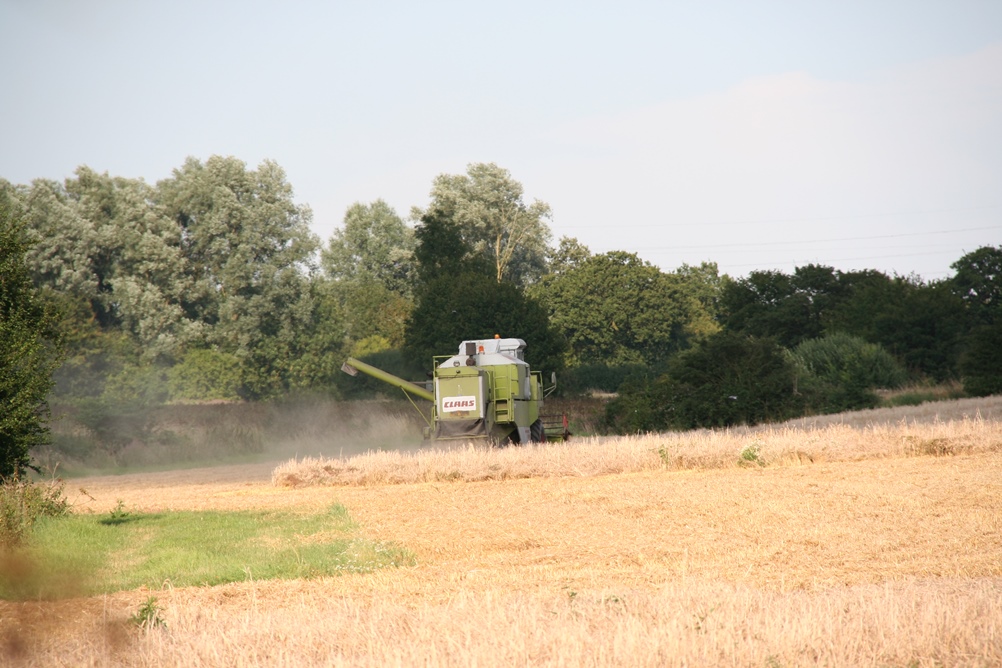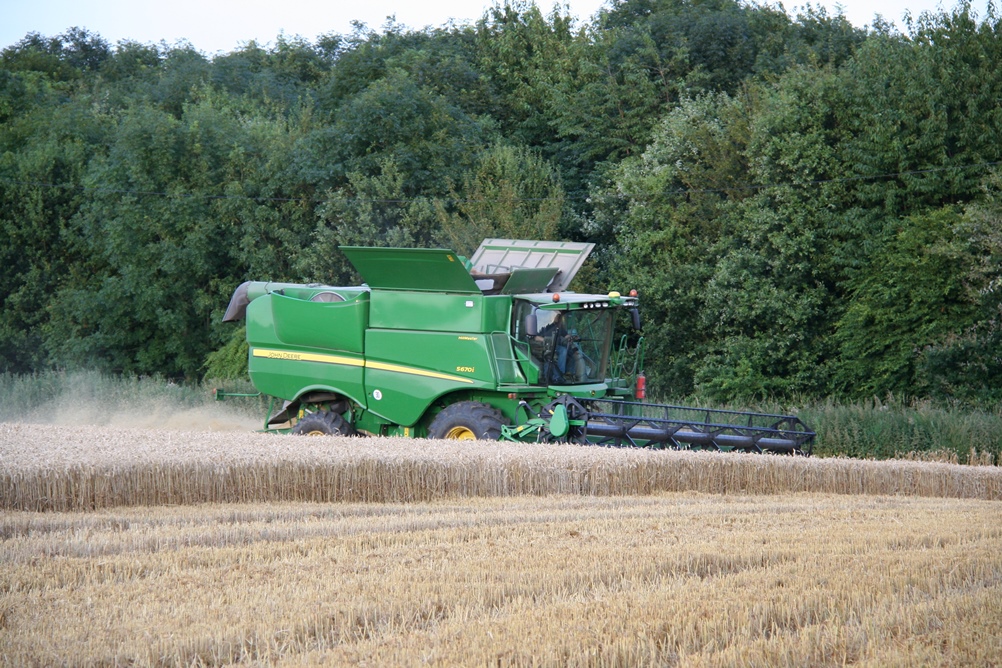Through much of August the sound of combine harvesters can be heard, especially when there has been a good dry spell, and sometimes the farmers will work through the night if rain is predicted for the next day. The sound of machinery in the fields drew me out for a walk one balmy August afternoon.
The fields on either side of Mutton Lane were as yet unscathed by the combine harvesters.
But following a public bridleway leading off the lane, I soon came across a small-scale operation: one tractor and trailer bin parked at the side of the field.
And in the distance a single combine harvester at work.
Some bales of straw, unused from last year, lie not far from the tractor. The heap of this year's grain harvest can already be seen just making it above the top of the bin.
The farm house lies to the south of these fields, not far off.
A magnificent oak tree stands proud of the hedgerow separating two fields.
The field to the south has a crop of broad beans, possibly a market gardening crop, or it could be grown for silage; whichever, it will certainly be enriching the soil with nitrogenous compounds, especially when the crop residue is ploughed in.
Back to the combine harvester, which is now approaching me.
It turns out to be a Claas Dominator 66, yours for around £17000. Some farmers own their own harvesters, but it's quite an expensive bit of kit which is used for only a couple of weeks in the year. So many hire in a team from a commercial company. My guess is that this farmer owned this machine, as harvesting appeared to be a one-man operation. Here the machine has been turned through 90o from where it was in the previous photograph.
Its blades are lowered again and it sets off.
It takes a couple of seconds before the separated straw starts to fly out of the back.
Descending the slope, the harvester in full flow is very dusty and noisy.
On my way back along the bridleway I meet up with some local horses, and this one clearly enjoys chewing away at the kissing gate.
Two white companions decide to keep their distance.
A wild honeysuckle in fruit (Lonicera, but I'm unsure which species).
The same plant is also still producing flowers, so it's not surprising there are several species classified as invasive in various parts of the world. In our garden it's enemy number two, second only to ivy (Hedera helix). Despite that, I love the scent of its flowers carried on the breeze on a warm summer's day.
The sun is low in the sky as I continue my walk along Mutton Lane, and the ash trees cast long, eerie shadows over the barley waiting for the combines to arrive.
As I round a bend in the road, I notice a feral cat who had seen me long before I had spotted him.
In a trice he has bounded off, leaving only the stubble he had been hunting through in this partly harvested field.
I spotted the lone Claas harvester still at work in a distant field, and set off back home.
Knapweed catches the late evening sun.
Looking towards the setting sun, I notice some grass also catching the light.
While I'm busy photographing the grass, I become aware that the field where I saw the feral cat is now being harvested, so I return to find a much bigger operation underway than I had seen earlier in the day. The machine heaving into sight is a John Deere 9780i CTS and it could set you back as much as £100000, depending on age and accessories. This is clearly a commercial operation, as there are at least two of these machines operating, along with many tractor-drawn bins.
It's a thrilling sight as it passes within a few yards of me, very noisy and dusty ...
... and pursued by a tractor-drawn bin. It's now just after eight o'clock and the long summer twilight is fading, so I head for home.
























































